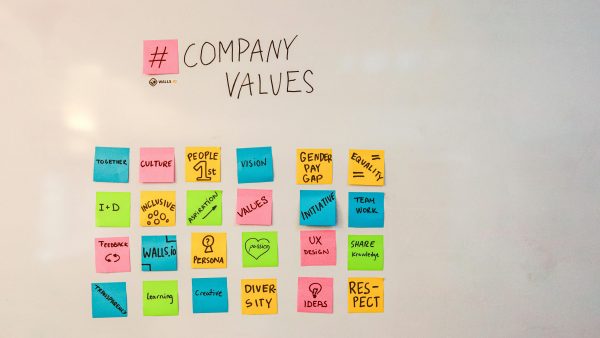A Minimum Viable Product is the most basic version of a product and can be launched to test an idea. It only includes the A Minimum Viable Product is the most basic version of a product and can be launched to test an idea. It only includes the essential functions to solve the main problem of the users and to collect feedback on its usefulness.
Why the MVP is important
It is very important because you save time and money by building only what is necessary before investing in advanced features, you alsovalidate your idea by finding out if your product really interests users. It is fundamental because you get feedback from users because they help you to improve the product before launching a full or complete version, and you can reduce risks by avoiding investing in something that could fail. If you discover that your idea is not viable, you can change course without big losses.
How to make an MVP
An MVP is an agile and practical way to develop an initial idea, focusing on the essentials to solve a problem by following these 4 steps:
Define the problem
The first step is to identify what need or problem you want to solve. If this is not clear, it is easy to lose your way, just ask yourself:
- What problem do people face?
- Why do they need a solution?
- What impact would your solution have on their lives?
Example: A mother struggling to find educational activities for her children might need an app that suggests quick and inexpensive activities. Be specific. The problem should be clear and relevant to a target audience.
Prioritise functions
Your idea probably has many possible features, but in the MVP you will only include the ones that are essential to solve the main problem, make a list of all possible features and ask yourself; which ones are essential to solve the problem, then discard everything else to focus on the basics.
Example: If you are creating an app for recipes, the key functions could be:
- Recipe listing.
- Basic filters by type of food or diet. Better a simple solution that works well, than a complex one that confuses.
Launch quickly
Don’t get stuck looking for perfection. An MVP doesn’t need to be pretty or completely finished; it just needs to be functional and fulfil its main purpose, use simple tools like paper prototypes, basic websites or collaborative tools and don’t worry if you don’t have all the answers, remember that the important thing is to test the idea.
Example: Instead of developing a complex app, launch an online form that delivers recipes by email. The important thing is not what your MVP looks like, but whether it solves the users’ problem.
Listen to users
Once you launch your MVP, always listen to users, always… Gather feedback from users to understand how to improve, talk to them directly or use surveys or interviews to find out what they like and dislike, observe how they interact with your product and what difficulties they face. Adjust and prioritise improvements based on their feedback.
Example: Users might ask you to include recipes for people with Coeliac disease or suggest making instructions more visual. Remember that your product must constantly evolve according to the real needs of your users.
Examples of MVPs
- Dropbox: In the beginning, Dropbox was not an app. It was a video explaining how the cloud storage service would work. The video helped validate user interest before developing the platform.
- Airbnb: The founders started by renting an inflatable mattress in their living room. They created a simple page where guests could book. This is how they tested whether the idea of sharing space worked.
- Uber: Their MVP was a basic app that connected drivers with passengers in a single city. There were no big features, just what was needed to book a car.
- Twitter: It started as an internal project for employees of a tech company called Odeo to share short updates with each other. Noticing the interest, they launched it to the public with very basic functions.
- Amazon: The site only sold books. Instead of building a huge infrastructure, it bought books from distributors and shipped them directly.
- Instagram: The first version of Instagram focused solely on editing and sharing photos with filters. It had no direct messages or stories, just the basic functionality that users wanted at the time.
What’s next after the MVP?
Once you prove that your idea works, you can add new features, improve the design and user experience, and expand the reach to more users or markets.
How do you put together a Minimum Viable Product?
Creating an MVP doesn’t have to be complicated. Follow these simple steps:
Identify the problem you want to solve:
- What is the need of your users?
- Clearly define how your idea will solve that problem.
Know your target audience:
- Who will use your product?
- Talk to them or do research to understand their needs.
Prioritise key features:
- Make a list of all the features you could include.
- Select only the ones that are essential to solve the main problem.
Choose the simplest way to showcase your idea:
- It can be a basic app, a web page, a prototype or even an explanatory video.
- Don’t look for perfection, just functionality.
Develop and launch quickly:
- Create the MVP in the shortest possible time.
- Focus on getting it right, even if it’s basic.
Test it with real users:
- Get your target audience to use it.
- Ask for feedback on what they like and what they would change.
Analyse the results:
- Did it solve the user’s problem?
- What improvements can you make?
Continuously improve:
- Use feedback to adjust and improve the product.
- Add new features once you are sure there is interest.
Practical example for building an MVP
Andrea is a young woman passionate about fitness and technology. During the pandemic, she noticed that many people wanted to train from home, but didn’t know how to start or who to ask for help and she thought …‘ What if I could connect these people with personal trainers quickly and easily?’ …
He decided to test his idea, but instead of investing time and money in developing a sophisticated app, he chose to create a Minimum Viable Product (MVP). His goal was to validate whether his idea really mattered to people.
Step 1: Identify the problem
Andrea started by asking herself: what problem am I solving? The answer was clear:
‘Many people want to exercise at home, but don’t know how or with whom.’
Step 2: Know your target audience
He researched social media and WhatsApp groups and discovered that his audience was adults who preferred to work out at home due to lack of time or because they didn’t like gyms with so many people.
Step 3: Prioritise key features
Andrea knew she couldn’t include everything in her MVP and decided to focus on three core functions:
- User and trainer registration.
- Trainer profiles with their specialities (yoga, strength, pilates, etc.).
- A simple button for users to contact coaches via WhatsApp.
Step 4: Creating the MVP in a simple way
Instead of hiring developers, Andrea used basic tools to put her idea together. She designed a simple website with WordPress then created a Google form for coaches to register and implemented a WhatsApp button to facilitate contact between users and coaches.
Step 5: Launch and test
Once ready, she shared her website in fitness groups and on her social networks. He invited people to try it out and asked for honest feedback. Users said they loved being able to find trainers easily and some asked for more features, such as scheduling sessions or paying directly from the platform.
Step 6: Analyse and improve
With that feedback, Andrea validated that her idea had potential and decided to keep the current functions, but optimise them and add new features such as scheduling and payment options in a future version.
The result
Thanks to the MVP Andrea not only saved time and money, but also proved that there was real interest in her idea before developing it further. She is now working on the improved version of her platform, knowing that she is on the right track.











